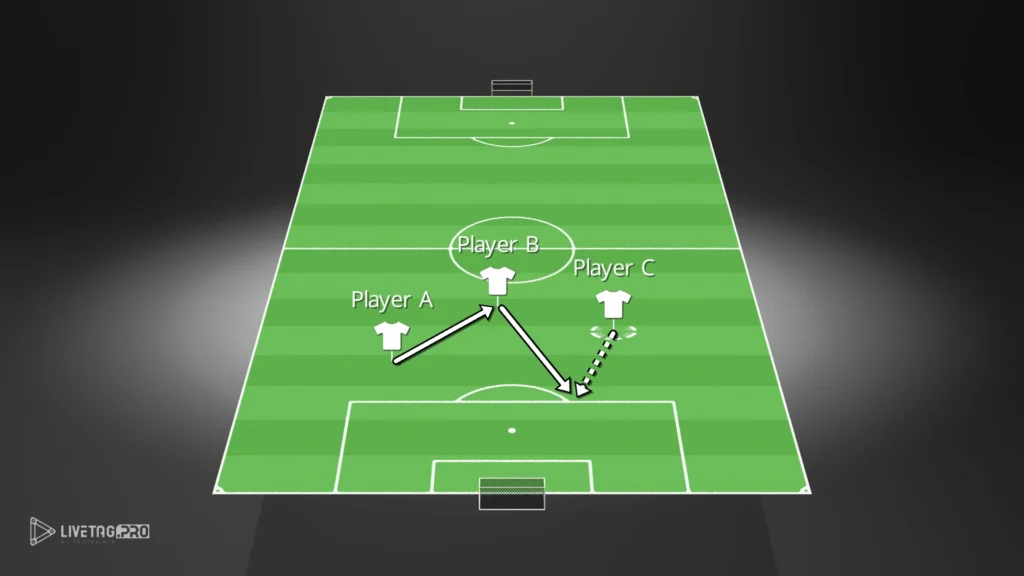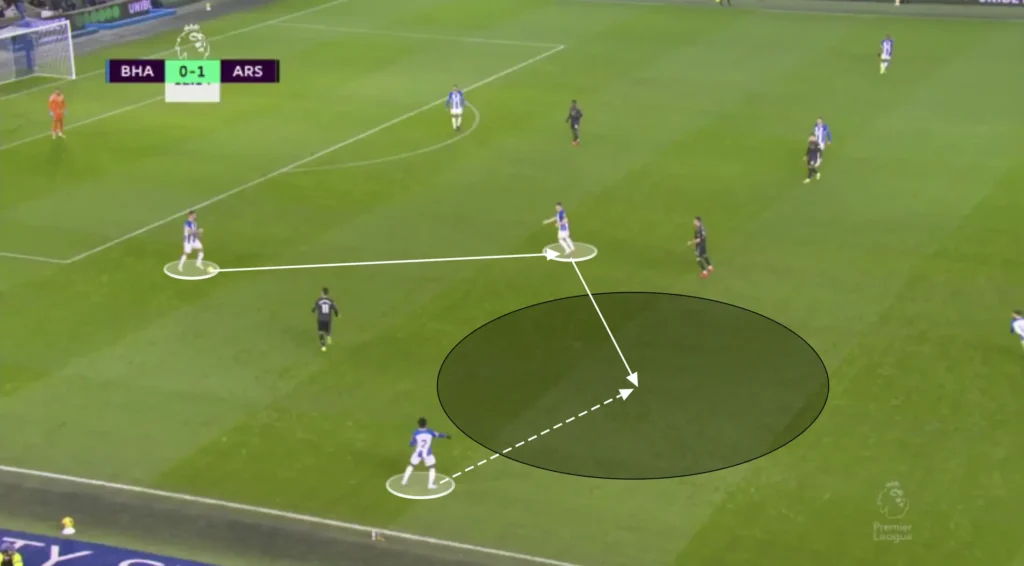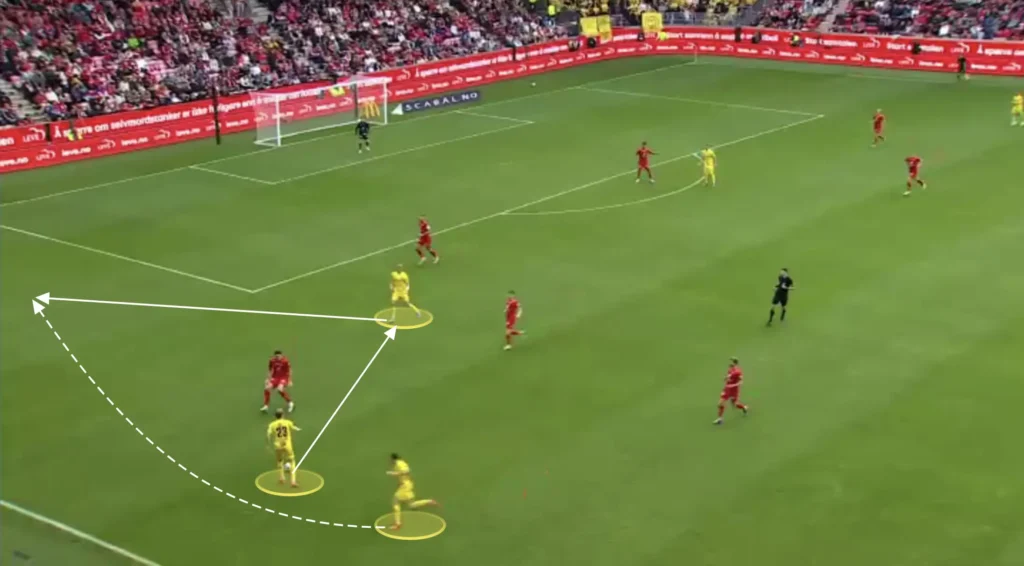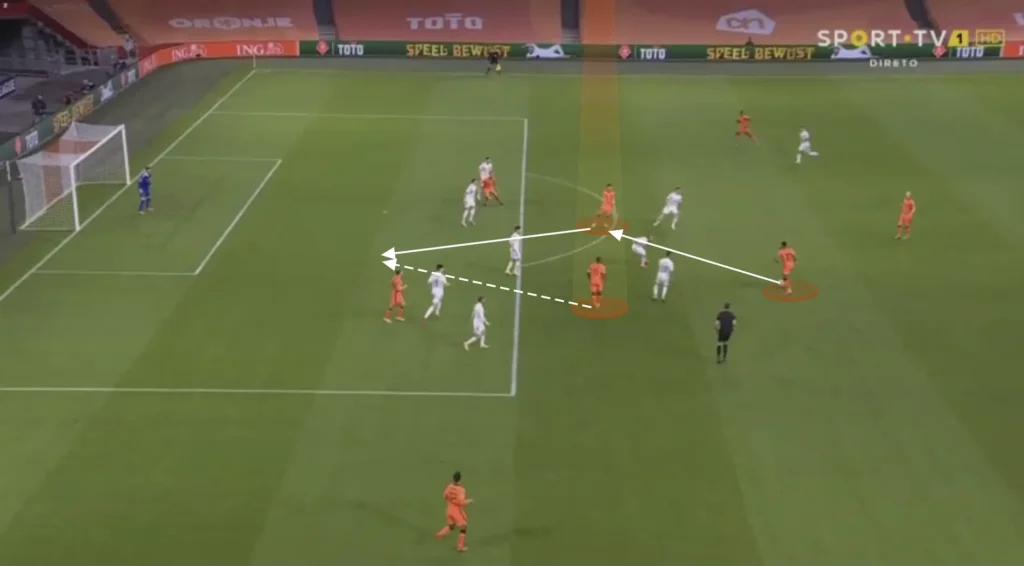Football revolves around space, movement, and strategy, with the ball serving as a tool to manipulate the opposition and create opportunities. Among the many tactical nuances, the third-man run stands out for its simplicity and remarkable effectiveness. This tactic requires precise coordination between players and a keen understanding of spatial dynamics to outmaneuver opposition defenses. This article explores third-man runs in exhaustive detail, breaking down their mechanics, principles, practical applications, and methods for training and implementation.
What Are Third-Man Runs?
At its core, a third-man run is a coordinated sequence involving three players designed to exploit space and disrupt defensive structures. The process typically unfolds in three distinct steps:
- Player A (the first man) initiates the sequence by passing the ball to Player B (the second man).
- Player C (the third man), who is not involved in the initial pass, makes a well-timed run into space, anticipating a pass from Player B.
- Player B then plays the ball into the path of Player C, who capitalizes on the space created by the movements of the first two players.

The brilliance of this tactic lies in the involvement of a “third man” who operates outside the immediate defensive focus. By the time the opposition reacts, Player C is often in an advantageous position to either continue the attack, deliver a cross, or take a shot on goal.
The Key Components of Third-Man Runs
Executing a third-man run successfully requires several elements to align perfectly. These include:
1. Timing
The synchronization of movements is paramount. The third man’s run must be perfectly timed to:
- Avoid being caught offside.
- Exploit gaps in the defensive structure.
- Arrive in space precisely when the ball is played.
2. Spatial Awareness
All three players involved need an acute understanding of the pitch layout, the positioning of defenders, and the space available. This awareness allows them to:
- Identify the areas of the pitch that can be exploited.
- Anticipate the movements of both teammates and opponents.
3. Decisive Passing
The quality and intent of the passes are critical. The first pass (from Player A to Player B) often serves to draw defenders, while the second pass (from Player B to Player C) must be incisive, quick, and well-weighted to exploit the created space.
4. Off-the-Ball Movement
The off-the-ball runs of Player C and the positioning of Player A and Player B are essential. These movements must:
- Draw defenders out of position.
- Open passing lanes.
- Create confusion and hesitation in the opposition’s defensive organization.
Why Are Third-Man Runs So Effective?
Third-man runs are highly effective because they exploit the inherent weaknesses in defensive systems. Here are some reasons why this tactic is so impactful:
1. Diverting Defensive Attention
Defenders are naturally inclined to focus on the ball and the players immediately involved in possession. Third-man runs capitalize on this tendency, as the third man often operates outside the primary defensive focus.
2. Creating Numerical Advantages
By involving three players in a coordinated sequence, teams can overload specific areas of the pitch. This can:
- Break through compact defensive blocks.
- Create 2v1 or 3v2 scenarios in critical areas.
3. Exploiting Blind Spots
The third man’s run often occurs in areas where defenders have limited visibility, such as behind their line of sight. This makes it difficult for defenders to track the movement and react in time.
4. Generating Momentum
The speed and fluidity of third-man runs make them particularly effective in transitional moments. By catching defenders off balance, teams can exploit these scenarios to create high-quality chances.
Tactical Applications of Third-Man Runs
Third-man runs can be applied in various phases of play, making them a versatile tool in any tactical setup. Here are some common scenarios:
1. In Build-Up Play
- Purpose: To bypass an opposition press and progress the ball into advanced areas.
- Example: A midfielder (Player B) receives the ball from a center-back (Player A) and plays a forward pass to a fullback (Player C), making a run between the lines.

2. In Wide Areas
- Purpose: To create overloads and exploit space behind the opposition fullbacks.
- Example: An overlapping fullback (Player C) makes a run into behind while the ball is played to them by an attacking midfielder (Player B).

3. In the Final Third
- Purpose: To disrupt defensive organization and create goal-scoring opportunities.
- Example: An attacking midfielder (Player C) makes a late run into the penalty area, receiving the ball from a striker (Player B) after an initial pass from a deep-lying playmaker (Player A).

Challenges in Executing Third-Man Runs
While third-man runs are highly effective, they can be challenging to execute consistently. Common obstacles include:
- Poor Timing: Mistimed runs can lead to offside calls or a failure to exploit the available space.
- Lack of Communication: Without clear communication, players may struggle to coordinate their movements effectively.
- Defensive Adaptations: Intelligent defenders can recognize and anticipate third-man runs, neutralizing their impact.
How to Train and Develop Third-Man Runs
To incorporate third-man runs into a team’s tactical repertoire, training must emphasize the following aspects:
1. Small-Sided Drills
- Design exercises that focus on three-player combinations in tight spaces.
- Emphasize quick passing, movement, and spatial awareness.
2. Positional Play Games
- Set up scenarios that replicate game situations, such as creating overloads in specific areas.
- Encourage players to identify and execute third-man movements.
3. Pattern Play Exercises
- Practice structured passing patterns that incorporate third-man runs.
- Focus on the timing and precision of both the passes and the runs.
4. Video Analysis
- Study examples of successful third-man runs from professional teams.
- Analyze how players coordinate their movements and identify key factors that contribute to success.
5. Match Scenarios
- Use practice matches to simulate real-game scenarios where third-man runs can be executed.
- Provide feedback to players on their positioning, timing, and decision-making.
Conclusion
Third-man runs exemplify the intricate beauty of football tactics. By combining precise passing, intelligent movement, and spatial awareness, teams can unlock even the most organized defenses. Whether used in build-up play, wide areas, or the final third, this tactic remains a vital tool for coaches and players aiming to elevate their game. Understanding and mastering third-man runs is not just a tactical advantage but a testament to the creativity and coordination that define modern football.
